From the Editor
This excerpt from my book-in-progress on conciliarity in the modern Russian Church was written some time ago. It is striking how, a hundred years ago, attitudes regarding the issue of the Orthodox Church in Ukraine were almost identical to the challenges we have seen there within the last decade. Most of the Orthodox people were for autonomy within the Moscow Patriarchate. The Ukrainian People’s Republic sought autocephaly and arrested the Russian imperially-minded hierarch Metropolitan Antonii (Khrapovitskii). At the same time, the latter did not show any attempts to understand the Ukrainophiles’ pain. As a result of a lack of proactive measures, an uncanonical autocephaly was proclaimed. If history has something to teach us through this excerpt, it is that neither historical actors nor we ourselves exist in a vacuum, but have an impact on each other through action or inaction, through our willingness to listen and understand or through believing, instead, in our own righteousness.
Protodeacon Andrei Psarev
December 23, 2022
Khe Kyivan Rus’ received Christianity from Eastern Roman empire in 988 or 989. In 1448 the Church of Muscovy declared independence from Constantinople, while the church in the Polish-Lithuanian commonwealth (where Kyiv was located) remained under the Ecumenical Patriarchate. In 1596 in Brest all of the bishops of the Kyivan metropolitante ratified the union with the Roman-Catholic Church. Simultaneously an Orthodox council in the same town and at the same time rejected the act of the union. Thus, the schism in the church was introduced. By the end of the seventeenth century most of the Eastern Ukraine joined Muscovy and in 1686 the church there was transferred from the Ecumenical Patriarchate to jurisdiction of the Church of Russia. [1]For the discussion surrounding controversy of the conditions for this transfer see Vera Tchentsova, “The Patriarchal and Synodal Act of 1686 in Historiographical Aspects,” Orthodoxy in Two … Continue reading This historical experience between Moscow and Warsaw defined identity of many nationally minded Ukrainians at the time of the collapse of the Russian empire.
On November 7/20, 1917, following the Bolshevik Revolution in Moscow and Petrograd Ukraine became a people’s republic in the federation with Soviet Russia. The strong tendency of organizing the new independent Ukrainian state based on ethnical and cultural identity resonated with some of the church people in Ukraine. In October 1917 Ukrainian military had their congress where the question of All Ukrainian Church Council was discussed. As it was mentioned in Chapter 1, on November 23, 1917, clergy and laypeople founded in Kyiv All Ukrainian Provisional Orthodox Church Assembly (Rada). The Rada had a task to organize the All-Ukrainian church council. This Rada was recognized by the new Ukrainian socialist government. The retired Archbishop Aleksei Dorodnitsyn (d. 1919), agreed to lead this assembly. The Rada treated with utmost suspicion the restoration of the Russian Patriarchate believing that its activity in Ukraine would result in the expansion of Russian imperialism. One of the leaders of this revolutionary movement in the church Archpriest Vasil’ Lipkov’skii thus outlined tasks of a council to organize the new Ukrainian sobornoprvna Church:
- It was to be free and autocephalous.
- Its administration was to belong to all its members (…);
- It was to be living and creative, and its church life, based on the Orthodox faith, was to have national traits, “replacing a dead conservatism with living creativity.”
At the end of November 1917, Patriarch Tikhon met with the Rada members in Moscow and found that they were in a favor of establishing the Ukrainian autocephalous church (independent of subordination to Moscow). As a result, a commission of the All-Russian council led by Metropolitan Platon Rozhdestvenskii of Tiflis (d. 1934) was sent from to Kyiv. Metropolitan Platon offered the same representative principle as at All-Russian Council. However, it was impossible to organize such elections in all Ukraine in the time of continuing war. Metropolitan Vladimir Bogoiavlenskii of Kyiv was suspicious of the Rada. [2]The contemporary Ukrainian Church historian Igor Kamennyi emphasizes this moment: “Thus, simultaneously with the enthronement of Patriarch Tikhon in Moscow as a head of the entire Russian Church, … Continue reading The Rada scheduled the council’s opening on December 28, 1917. However, the All-Ukrainian council did not open until Ukrainian bishops at the All-Russian council in Moscow returned to Ukraine during the Christmas recess of 1917-18. Patriarch Tikhon appointed Metropolitan Platon Rozhdestvenskii of Odessa as his representative at the council. The first session of the council lasted from January 7 until January 19, 1918. At the beginning the council had 279 members. Metropolitan Antonii Khrapovitskii of Kharkiv was elected a chairman. The council was organized along the lines of the All-Russian Church Council in committees of:
- Supreme church authority;
- Dioceses and parishes;
- Regarding Ukrainization of church life;
- Ecclesiastical education;
- Church finances;
- Personnel Commission (checked credentials of the members).
On January 11, 1918, the representative of the Ukrainian government Alexander Karpin’skii expressed the desire of the government to have an independent church in the independent state. The issue of autocephaly demonstrated irreconciled trends between delegates – to remain within the Russian Church or to disassociate from it. On January 19, 1918 in 94 delegates voted to temporary close the council in view of the Bolsheviks’ war against Ukrainian People’s Republic (UPR). On January 22 UPR proclaimed its independence from Russia. On January 25, a day before the Bolsheviks took over Kyiv, Metropolitan Vladimir was brutally killed by unidentified perpetrators.
On April 29, 1918, the German army occupied Kyiv, supported the installation of Getman Pavlo Skoropad’skii and disbanded UPR. On May 19, 1918, the diocesan assembly in Kyiv, elected Metropolitan Antonii Khrapovitskii of Kharkiv Metropolitan of Kyiv and Galicia. Vasilii Zen’kovskii, Minister of religious confessions in Pavlo Skoropad’skii’s government, opposed to this decision believing that an election of the chief hierarch should be done not by vicar bishops, clergy and laity of his See of Kyiv, but by representatives of the Ukrainian Church at an All-Ukrainian Council. Getman Pavlo Skoropadskii, a quasi-monarch, Russian nobleman and decorated imperial general, was closed in his views to Antonii, a Russian patriot and monarchist. [3]In his memoirs (End of 1917- December 1918) Getman wrote that Metropolitan Anttonii was a non-official leader of all Kyivan monarchists. Spogadi (Kyiv-Philadelphia, PA:1995); 197-199. Cited from … Continue reading
On June 20, 1918, the All-Ukrainian Council resumed its second session. At the first meeting of all, 251 delegates of the council Basil Zen’kovskii expressed the desire of the government to have an ecclesiastical autonomy within the Russian Orthodox Church. In his sermon on July 2, 1918 Metropolitan Antonii emphasized that the process of renewal of Russia begins from Ukraine.
The directions of conciliar debates were expressed by the two trends: the first one marked by the preservation of Church Slavonic as a liturgical language and connection with the Russian Church. I will conventionally call it “conservationist,” The second one, “liberationist,” represented by the members of Church Rada in favor of autocephaly and Ukrainization of the church life. As the result of the voting on July 7, 1918, the supporters of Church Rada (about 102) were removed from the council: 172 for expulsion, 142 for remaining and 13 abstained.
On July 9, 1918, the council supported the Ukrainian Church’s autonomy (the Moscow patriarch should approve the metropolitan of Kyiv) and the binding significance of decisions of the All-Russian Council for the church in Ukraine. [4] 213 against 128 abstained from voting. The All-Ukrainian Church council with all the bishops, clergy and lay representatives became the supreme church authority Ukrainian autonomous church. The council expected to meet every three year. Similarly to the Russian Church a Bishop Council and Supreme Church Rada, with representatives of clergy and laity, became executive organs of the All-Ukrainian Church Council. The Church-Slavonic language and not the Ukrainian remained a liturgical language of the new church. However, the sermon could be delivered in the Ukrainian language (a change from the imperial period). The second council’s session ended on July 11, 1918. was approved by All-Russian Council at its session of September 26, 1918 approved the autonomous status of the Ukrainian Church.
All together at different times in the third session lasted from October 28 until December 16, 1918, participated 369 delegates. The struggle between the conservations and liberationists’ attitudes culminated during the third and final session of the council when on November 14, 1918, the new minister of religious confessions of the Getman’s government Oleksandr Lotot’skii expressed the wish of the government to have an autocephalous church. Along the lines of the All-Russian Council the All-Ukrainian Council decided that women had equal voting rights at the parish assemblies along with men.
On November 19, 1918, the council appealed to the Ukrainian people to support Getman Pavlo Skoropad’skii’s regime. On December 14, 1918, Skoropadskii’s government was toppled down as a result of coup d’état led by the Ukrainian socialist and nationalist politicians Symon Petliura and Volodymyr Vynnychenko (Directorate government). The UPR was restored, and the work of the council was interrupted. The new government did not plan a dialogue with the Ukrainian autonomous church of the Moscow Patriarchate. Metropolitan Antonii proscribed his clergy to greet the troops of Directorate entering Kyiv. Nevertheless, on December 18, 1918 he was arrested by the representatives of the new government and along with Archbishop Evlogii of Volynia, Archimandrites Vitalii (Maksimenko), Tikhon (Sharapov) and others extradited to a Greek-Catholic monastery in Buchach in Galicia. [5]Metropolitan Platon Rozhdestvenskii of Odessa became a substitute to Metropolitan Antonii of Kyiv after his arrest. On December 30, 1918, he sent a telegram to Archbishop Randall of Canterbury … Continue reading On January 1, 1919 the Directorate government adopted A Law about the Supreme Authority in the Ukrainian Autocephalous Orthodox Church pronouncing its independence and the end of subordination to the Moscow Patriarchate. The commemoration of the names of Patriarch Tikhon and Metropolitan Antonii during liturgical services was prohibited. Soon afterward, Lototskii, in the capacity of the Ukrainian ambassador in the former Ottoman empire, petitioned the Ecumenical Patriarchate to grant autocephaly to the Ukrainian Church. Because the patriarchal throne was vacant since October 28, 1918, the Locum Tenens Metropolitan Dorotheos of Brussa could not positively respond to the petition.
On February 8, 1919, the Bolsheviks took over Kyiv from the Directorate government. During Great Lent of 1919, the vicar bishop of Metropolitan Antonii Nazarii Blinov of Cherkasy, turned down a number of petitions of having services in Ukrainian during Pasion Week referring to the council’s decision. Under the Bolsheivks’ regime, the Rada was recreated as Supreme Church Assembly on April 17, 1919. To demonstrate the democratic ethos of the new autocephalous church, the layman Mikhail Moroz was appointed as its head. Archbishop Agapit Vishnevskii of Ekaterinoslavl’ became the head of the Synod along with Archpriest Vasil’ Lip’kovskii. The Rada ceased ecclesiastical subordination to the Russian Church. In May of 1919 the Rada was registered by the Soviet authorities. The first liturgical service (All-night vigil) in the Ukrainian language took place on May 9/22, 1919, in St. Nicholas cathedral in Pechersk. Because neither Patriarch Tikhon nor Metropolitan Antonii were commemorated at the services Bishop Nazarii (Blinov) suspended participated clergy. In such circumstances when Metropolitan of Kyiv was still isolated, the South-Russian Council, which met in Stavropol from May 3 to 17 of 1919 decided to extend the authority of the Temporary Supreme Ecclesiastical Authority in South of Russia to Ukraine. On July 4, 1919, Patriarch Tikhon permitted Ukrainian bishops to contact him directly regarding any questions and to establish local autonomy. [6] Andriy Starodub, Vseukrain’iskii pravoslavnyi tserkovnyi sobor 1918 godu (Kyiv, 2010), 64. In August of 1919 the General Deniken’s Voluntary Army took over Kyiv from the Bolshevik. [7]Deniken’s views regarding the independent Ukrainian state were expressed in his: “There can be no talk of any Ukrainian independent state. Their leaders, yesterday’s farm laborers at the … Continue reading Metropolitan Antonii Khrapovistkii returned to Kyiv. Churches taken by the autocephalists were returned to him and their clergymen suspended. [8]On November 27, 1919, at the ecclesiastical trial in Novocherkassk by Metropolitan Antonii and twelve bishop members of TSEASR retied Archbishop Agapit to a monastery for ceasing liturgical … Continue reading Metropolitan Antonii allowed to carry on services in Ukrainian in the Little St. Sophia church in Kyiv, a private church at his residence. [9] Sophia Senyk, “The Orthodox Church in Ukraine in the Twentieth Century,” The Orthodox Church in Eastern Europe in the Twentieth Century, 330. In December of 1919, Metropolitan Antonii left Kyiv for the last time with the retreating White Army. When the Bolsheviks took over the city, they returned to the adherence of autocephaly all churches taken from them by the Whites. On November 27, 1919, at the ecclesiastical trial in Novocherkassk by Metropolitan Antonii and twelve bishop members of TSEA retired Archbishop Agapit to a monastery for ceasing liturgical commemoration of Patriarch Tikhon and Metropoliatn Antonii. No single bishop supported this movement. The All-Ukrainian Church Rada was restored. On May 3 Bishop Nazarii suspended all priests involved with Rada. On April 22, 1920, the Polish government made an agreement with Petliura to take over the territories of Ukraine controlled by the Bolsheviks. On May 5, 1920, Rada proclaimed itself the supreme church authority in Ukraine fighting for rights of Ukrainian Orthodox against oppressing Moscovite bishops until the All-Ukrainian Church Council. On May 7, 1920, Kyiv was taken over by the Polish and Directorate troops, which remained there until June 12, 1920.
The All-Ukrainian Council envisioned by the Rada assembled on October 14, 1921. The council members considered themselves ecclesiastical orphans because of the Russian and earlier Polish intervention (XVI-XVII cc.) in church affairs and because Kyiv’s metropolitan (Antonii Khrapovitskii) left their church. Since August 1921 Metropolitan of Grodno Michael Ermakov, Exarch of Patriarch Tikhon in Ukraine, led the diocese of Kyiv. Because Metropolitan Michael refused either to recognize Rada’s parallel existence, to participate in its council or to consecrate an “extraterritorial” [10] Theodosius, Obosoblencheskie dvizheniia, 190. bishop exclusively for the Ukrainians, the council members adopted the theology of Vladimir Chekhovskii. This scholar believed that the democratic will of the church community was more important for the descension of Holy Spirit than “a technical” aspect of Apostolic Succession associated with monarchical episcopate. [11]A point of reference here is the ecclesiastical order of the first century when hierarchy consisted of both presbyters and laity. See Susan Wesel, “The Formation of Ecclesiastical Law in the Early … Continue reading Although Metropolitan Michael demonstrated his willingness to establish communication and even went to the council to persuade its members not to create a schism, it was too late to change their mind. Thus, on October 23, 1921 the suspended Archpriest Vasil’ Lipkov’skii was consecrated archbishop of Kyiv by the will and through the entire council’s hands: suspended clergy (30 priests, 12 deacons) and both male and female members in the church of St. Sophia. Thus, receiving his authority from the ecclesiastical community and not from the sole episcopacy. The council justified this as a unique measure necessary under circumstances. The new church proclaimed Ukrainian Christian socialism and permitted bishops to remain married and to contract consequent marriages in reasonable cases. An ecclesiastical council became a supreme authority for this newly founded church body. Over one thousand parishes came over to the autocephalists.
After the first two episcopal consecration, the council returned to the traditional Byzantine practice of consecrating bishops by other bishops. No canonical Orthodox Church has ever recognized this charismatic movement. In the 1930s this church self-disbanded. In 1937 Lipkov’skii was arrested and exterminated by NKVD. The only survived bishop consecrated on October 26, 1921, was Ioann Theodorovich, sent in 1924 to North America. In 1949 the three canonical Orthodox bishops in New York performed his new consecration.
There is a lot of sense in the following assessment of the attitude toward this schism made by Metropolitan Theodosius Protsiuk in his candidate of theology thesis:
The Ukrainian episcopate, headed by Metropolitan Anthony (Khrapovitsky), could have followed the path of seeking reconciliation or at least brotherly understanding in Christ with the supporters of autocephaly. And their intransigence and enmity contributed to the schism, that is, the rejection of many thousands of people from the Orthodox Church. [12] Obosoblencheskie dvizheniia v Pravoslavnoi Tserkvi na Ukraine (Moscow, 2004), 121.
Metropolitan Theodosius did not explain how it would have been possible to synthetize two irreconciled tendency. Based on the numbers in the voting for the exclusion of Rada’s members of the council the Rada followers would not have still been able to defeat the autonomy of the Ukrainian Church. However, exclusion of different minded undermined this autonomy and created protestant opposition which after their expulsion did not care about conciliar representation. In addition to the monarchists and renovationists a question of ethnic identity came across boldly in the Ukrainian conciliar developments thus contributing to the range of ideologies.
References
| ↵1 | For the discussion surrounding controversy of the conditions for this transfer see Vera Tchentsova, “The Patriarchal and Synodal Act of 1686 in Historiographical Aspects,” Orthodoxy in Two Manifestations? The Conflict in Ukraine as Expression of a Fault Line in World Orthodoxy, Thomas Bremer, Alfons Brüning, Nadieszda Kizenko eds. (Peter Lang: Berlin, 2022), 45-69. |
|---|---|
| ↵2 | The contemporary Ukrainian Church historian Igor Kamennyi emphasizes this moment: “Thus, simultaneously with the enthronement of Patriarch Tikhon in Moscow as a head of the entire Russian Church, in Kiev an organization had emerged which claimed to be a central body of church administration in Ukraine. We should keep in mind that at that time the Metropolitan of Kiev had the rights of a mere diocesan bishop, and no legitimate collegial body of governance for the Ukrainian Church existed.” “Patriarkh Tikhon: Vzgliad na ukrainskii tserkovnyi vopros,” (“Patriarch Tikhon: His View Concerning the Issue of the Ukrainian Church”) Trudy Kievskoi dukhovnoi akademii 24 (2016): 248. |
| ↵3 | In his memoirs (End of 1917- December 1918) Getman wrote that Metropolitan Anttonii was a non-official leader of all Kyivan monarchists. Spogadi (Kyiv-Philadelphia, PA:1995); 197-199. Cited from Andriy Starodub, “Rezoliutsii mitropolita Antoniia (Khrapovitskogo) za 1918-yi god, kak istochnik po istorii Russkoi Pravoslavnoi Tserkvi,” Historical Studies of the Russian Church Abroad, https://www.rocorstudies.org/ru/2012/07/09/rezolyucii-mitropolita-antoniya-xrapovickogo-za-1918-god-kak-istochnik-po-istorii-russkoj-pravoslavnoj-cerkvi/ (Accessed March 18, 2021). |
| ↵4 | 213 against 128 abstained from voting. |
| ↵5 | Metropolitan Platon Rozhdestvenskii of Odessa became a substitute to Metropolitan Antonii of Kyiv after his arrest. On December 30, 1918, he sent a telegram to Archbishop Randall of Canterbury informing him about the arrest of his superior. At the time of this telegram Odessa was under the control of the French Brigadier General Philippe d’Anselme, chief of Entante troops in the South of Russia. In February of 1919, Henry Freydenberg, chief of staff to general d’Anselme at the negotiations with the minister of the trade and industry of Directorate government S. Ostapenko required released of the bishops from Buchach. After Galicia in May of 1919 was taken over by the Polish Army the bishops were transferred to the Greek-Catholic monastery of St.George in L’viv and then released. |
| ↵6 | Andriy Starodub, Vseukrain’iskii pravoslavnyi tserkovnyi sobor 1918 godu (Kyiv, 2010), 64. |
| ↵7 | Deniken’s views regarding the independent Ukrainian state were expressed in his: “There can be no talk of any Ukrainian independent state. Their leaders, yesterday’s farm laborers at the Little Russian [Great Russia meant Moscovite Russia] sugar refiners and Polish magnates, believe that the state is a village, that they can build it like digging up a vegetable garden after a vodka dance. Ukrainification is the standard of bragging and small-town narrow-mindedness, which sees nothing further than the ditch of its farm” (Ocherki Russkoi Smuty [Essays About the Russian Time of Trouble]. |
| ↵8 | On November 27, 1919, at the ecclesiastical trial in Novocherkassk by Metropolitan Antonii and twelve bishop members of TSEASR retied Archbishop Agapit to a monastery for ceasing liturgical commemoration of Patriarch Tikhon and Metropoliatn Antonii. |
| ↵9 | Sophia Senyk, “The Orthodox Church in Ukraine in the Twentieth Century,” The Orthodox Church in Eastern Europe in the Twentieth Century, 330. |
| ↵10 | Theodosius, Obosoblencheskie dvizheniia, 190. |
| ↵11 | A point of reference here is the ecclesiastical order of the first century when hierarchy consisted of both presbyters and laity. See Susan Wesel, “The Formation of Ecclesiastical Law in the Early Church,” History of Byzantine and Eastern Canon Law to 1500, W. Hartmann and K. Pennington eds (Washington, DC, 2021),1-23. Compare also with ordination of Archdeacon Stephen (Act. 6:5). |
| ↵12 | Obosoblencheskie dvizheniia v Pravoslavnoi Tserkvi na Ukraine (Moscow, 2004), 121. |

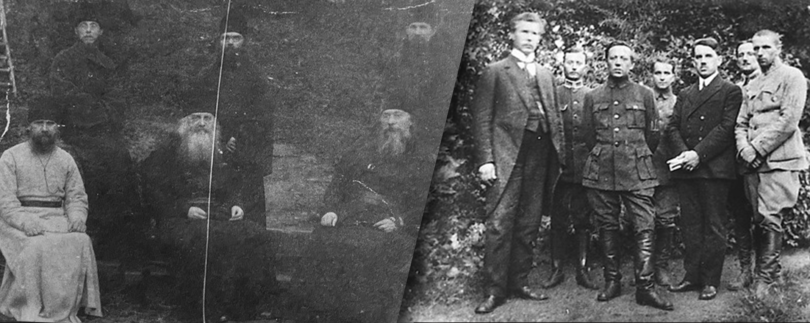
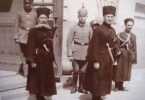

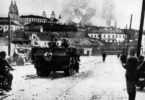

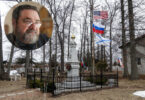
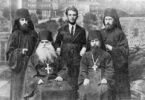
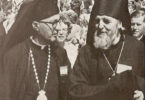

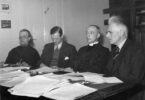

Excellent essay ! I eagerly await your book-in-progress on conciliarity in the modern Russian church.